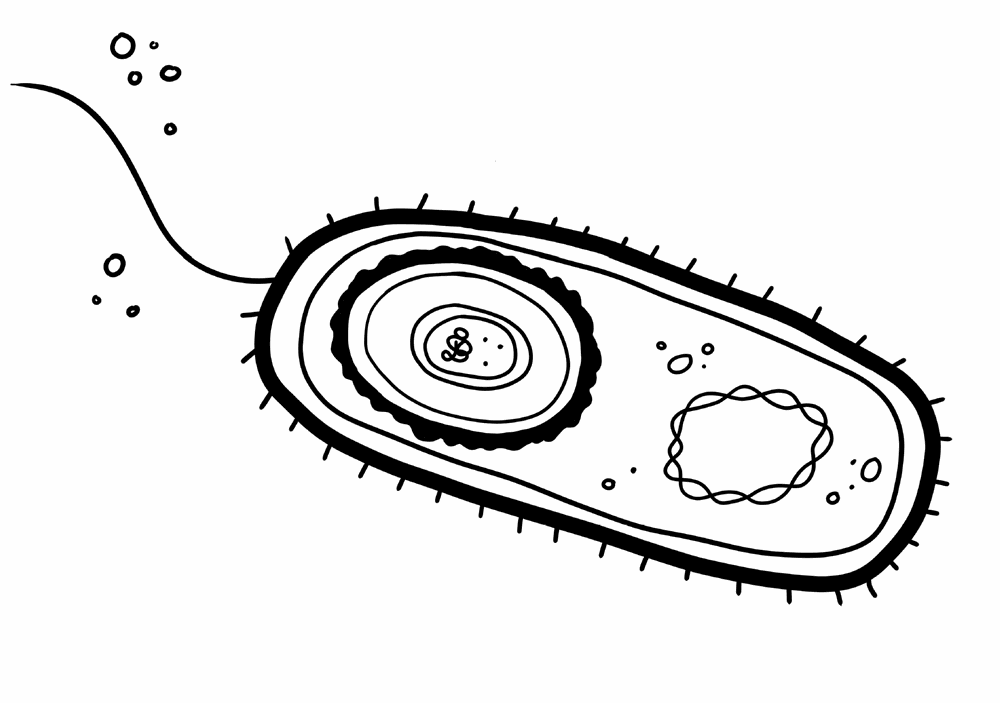Endospores (also called "spores") are sturdy structures formed by some bacteria to survive in unfavorable conditions like high heat or freezing temperatures. Once the environment is safe for the bacteria, the spores can create a new, fully functional cell - a vegetative cell.

Drawing of an endospore
Each spore is composed of multiple layers of protective coats and a core containing the code for life (DNA in this case) and cellular machinery that bacteria need to grow and eventually divide into new cells. When in unfavorable environments, spores are not active. Think of this like bears hibernating for the winter due to decreased food sources. In the spring, when more food is available, they wake up and continue life as usual. Spore-forming bacteria are very similar! The spore in the coloring page below is represented by the thick, frilly oval with rings inside of it. Each ring represents a protective layer, and the squiggle in the center is the protected package of DNA.
Clostridium and Bacillus are two spore-forming genera1, which also contain several foodborne pathogens that can cause foodborne illness in humans. These include Clostridium botulinum (the cause of botulism, which can lead to paralysis and death) and Bacillus cereus (a common cause of diarrheal and emetic food poisoning). Since these pathogens can form spores, they are commonly not inactivated with usual food treatment methods. For example, Clostridium botulinum is a common concern in canned food, so foods are canned using high pressure and high heat to kill spores. Another example is Bacillus cereus, which can be found in contaminated rice even after it is cooked. Therefore, it is important to refrigerate food leftovers to prevent the growth of Bacillus cereus in case some of its spores survived cooking and turned into vegetative cells that are able to grow at room temperature.
Please feel free to print out this image and color it yourself!
1The word "genera" is the plural form of "genus", which is a name for a group of similar bacterial species. When living things are named, the scientific names are composed of the genus (capitalized) and species (lower-case). For example, Tyrannosaurus is the genus for the Tyrannosaurus rex dinosaur. Yes, bacteria and dinosaurs are named following similar rules, even if a T. rex is almost 5,000,000 times larger than a bacterium!

